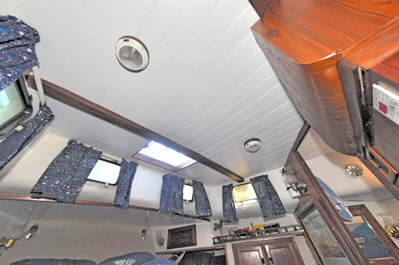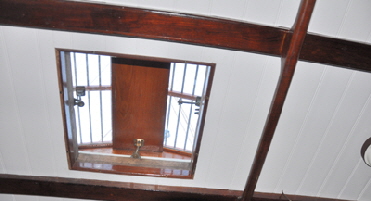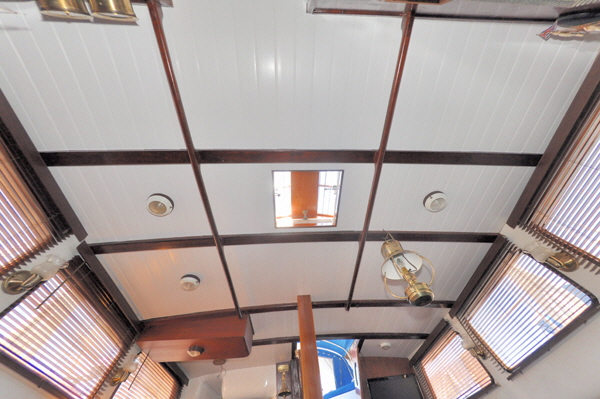All of the boats headliners have been replaced from dirty vynil material to tongue and grooved planking. Each board is 7” inches wide and 1/4” inch thick and an important benefit is the rot and mildew free lifetime guarantee and the ability to wash it with soap and water. The thickness gives better thermal insulation from the hot deck.

 Britannia has very professional looking overhead panels throughout, and it was worth it to have such a clean ceiling. We have also noticed a reduction in the heat felt through the deck on blistering hot Florida days. The effort has greatly improved the inside appearance. and probably the value of the boat.
Britannia has very professional looking overhead panels throughout, and it was worth it to have such a clean ceiling. We have also noticed a reduction in the heat felt through the deck on blistering hot Florida days. The effort has greatly improved the inside appearance. and probably the value of the boat.
